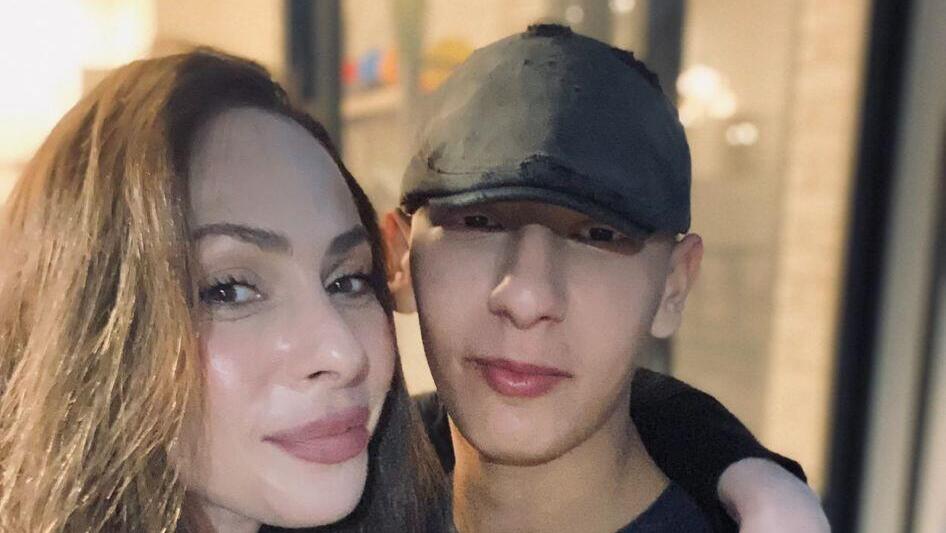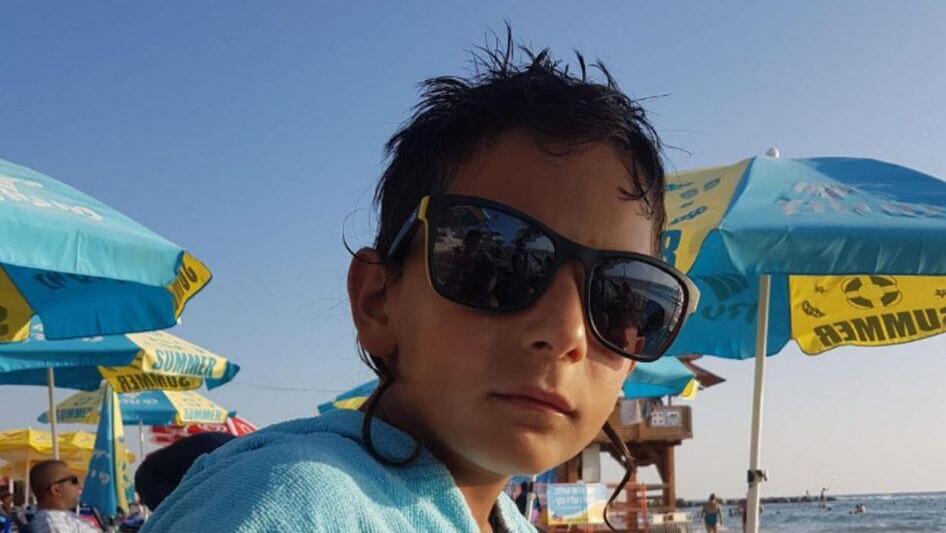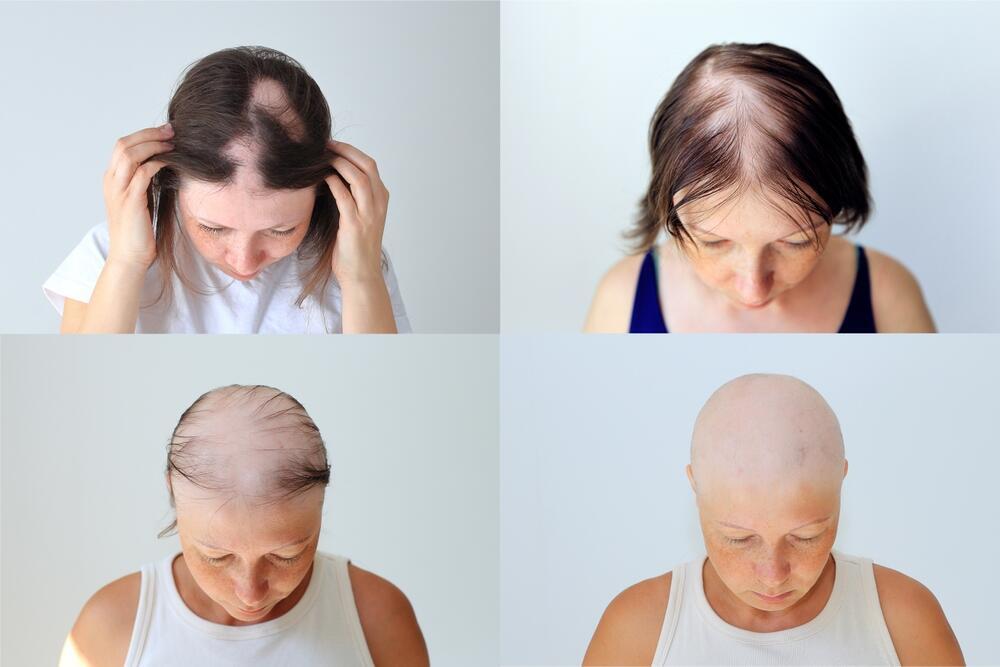Getting your Trinity Audio player ready...
I will never forget the day Yonatan approached me and asked me what happened to his head. It happened on the eve of Rosh Hashanah, just moments before the start of a new year and new hopes, as the first patch of hair loss appeared on Yonatan's head. This patch of alopecia changed our lives. At first, I thought he might have gotten hurt during recess at school or while playing with kids from his class. But as I ran my hand over his head to comfort him, my hand was filled with strands of hair.
Read more:
Anxious and concerned, I hurried to Yonatan's room to see if there was hair loss on his pillow. The pillow was clean, but the massive shedding of hair didn't stop, and you could see hair everywhere around the house.
After the holiday, I took Yonatan to see a doctor, who immediately diagnosed him with alopecia areata - an autoimmune condition that affects hair follicles and causes hair loss. In Yonatan's case, the hair loss was sudden, and we hardly had time to fully grasp the significance of the condition.
In fact, within a month and a half, Yonatan lost all his hair. Those were particularly tough days. Yonatan was only nine years old and extremely distressed. He entered a state of anxiety and asked numerous questions, primarily fearing that he would be left without any hair. At the point when Yonatan no longer had any hair left on his head, he started wearing a hat to school. Unfortunately, on the very first day he wore the hat, the other children took it off, mocked him and laughed at him. And just like that, in an instant, Yonatan went from being a beloved and popular child to becoming a target of ridicule.
The harsh reactions from the other children led Yonatan to clash with them, and he came back home that same day in tears and emotionally shattered. And as if the bullying at school wasn't enough, Yonatan also faced hostile treatment when he went out to play soccer in the neighborhood. At a certain point, we decided that in order to improve his social situation, Yonatan needed a new educational framework where we could proactively explain his medical condition to his peers to help him better integrate.
The sudden loss of hair led Yonatan to a loss of self-confidence. The harsh reactions from other children and the fact that he went from being a popular child to one who was ridiculed caused him an emotional breakdown. As parents, it was challenging for us to manage alone. To ease his burden, we took him to emotional therapy to help him cope with his feelings and fears. And there was no shortage of issues to work on. Yonatan struggled to attend school or go on outings, and he always wore a hat on his head.
The hat has become his shield against the world
We tried various treatments to improve the situation. The main treatments prescribed by the doctor included creams that proved ineffective. At a certain point, we were suggested to inject steroids directly into the scalp. However, after consulting with the "Heads Up" association, we realized that this wouldn't be effective and that it wasn't worth Yonatan suffering needlessly.
Over the years, Yonatan lost not only the hair on his head but also all the hair on his body, including eyebrows and eyelashes. The persistent hair loss has left Yonatan with a profound sense of shame that continues to this day, even at the age of 14. He still feels embarrassed by his appearance and wears a hat everywhere he goes. There are activities he chooses to avoid, such as going to the beach, as there's a risk of the hat being blown away by the wind. He has become so emotionally reliant on the hat that he finds it difficult to part with it, even though it's visibly worn out, in favor of a new one. The hat has become his shield against the world.
Despite the emotional challenges that children with alopecia areata face, some people still consider it a cosmetic issue. But it's not. There are children who suffer from anxiety and depression due to this condition. My son receives a lot of support and emotional therapy that gradually helps him regain some self-confidence and provides social support. Unfortunately, not every parent can afford to provide their child with emotional therapy, especially with the cost of living nowadays.
And it's not just emotional struggles. There are physical difficulties and pains as well. On dusty days, for instance, the airborne particles go directly into Yonatan's eyes since he lacks eyelashes and eyebrows. Even sweat gets into his eyes, causing recurring inflammation. Additionally, when there's strong sunlight or dry air, Yonatan's skin becomes extremely sensitive, and he suffers from uncomfortable irritations.
As a mother to a child suffering from alopecia areata, I closely follow medical developments, and I know that the FDA recently approved new treatments that have been found effective for the condition. This marks the first time there are targeted medications that offer us hope.
However, currently, these treatments are not yet included in state-funded health care and can only be obtained privately at a high cost, making them inaccessible to many. In our country, there are numerous children enduring both the emotional and physical challenges of the condition, and it's important not to downplay its impact. It's not merely a cosmetic condition, and it's time to shift our approach and provide patients access to medicine that can help halt the progression of the condition, improve self-esteem and enable them to lead fulfilling and joyful lives.
What is alopecia areata?
Dr. Helena Martinez, director of the Hair Clinic in the Dermatology Department at Rabin Medical Center, explains, "Alopecia areata is an autoimmune condition where the body's immune system malfunctions, treating hair follicles as foreign bodies and attacking them, leading to hair loss. Hair follicles aren't always permanently affected, and during periods when inflammation subsides, hair can regrow. The condition is characterized by patches of hair loss and regrowth and the more severe the condition, the lower the likelihood of successful hair regrowth.
"It's a common condition affecting around 2% of the global population, and similar statistics apply in Israel. This means that about one in every fifty people will experience at least one episode of alopecia areata during their lifetime. Typically, the condition emerges during the 20s or 30s, but it can also appear at much younger ages, during childhood or adolescence, and even in older adults.
"The severity of the condition is determined by the extent of the scalp area without hair. In mild cases, involvement will be about 20% or less of the scalp area; in moderate cases, it will range from 20% to 50% of the area; and in severe cases, more than 50% of the scalp area will be affected. In fact, in severe cases, patients might lose not only the hair on their head but also all body hair, including eyebrows, eyelashes and even facial hair."
How does the condition affect patients?
Despite the fact that alopecia areata is a condition that manifests solely in the form of hair loss, without internal involvement, its psychological impact on the patients is significant. The loss of hair on the head and face significantly affects patients' interactions with others, who might immediately assume that it's a severe condition or even cancer. Additionally, those with alopecia areata struggle to cope with the visible effects of the condition. Some feel embarrassed by their appearance and suffer from low self-esteem.
Hence, this is not a "cosmetic condition" that solely affects the aesthetics of patients. Some people experience depression and may become homebound, while others may require antidepressant or anxiety-relief medications. There's also a lack of acceptance and understanding for those with severe alopecia areata. This is reflected in various challenges, such as finding a partner or a new job.
Beyond the psychological implications, the condition also leads to various medical issues. The absence of eyelashes can result in situations where sweat or dust enters the eyes, causing irritation or recurring inflammation. Additionally, the lack of nasal hair can lead patients to suffer from chronic nasal discharge.
What is the treatment for the condition?
For cases of mild alopecia areata, treatment often involves the use of corticosteroid-based creams or direct corticosteroid injections into the affected area. This treatment helps many patients. In more severe cases, immunotherapy can be employed. This involves applying chemical substances to induce skin irritation and alter the inflammatory process. In other words, the irritation causes inflammation to shift from the hair follicles to the skin, enabling hair to regrow. As this treatment induces skin inflammation, it is both very tiring and prolonged, requiring extensive application of creams. Consequently, it's not very commonly used today.
Additional possible treatments for severe cases of the condition involve oral corticosteroid therapy. However, corticosteroid treatment is limited due to significant side effects, including weight gain, insomnia, elevated blood pressure, and sugar levels, decreased bone density, and more. Hence, even if hair regrows under corticosteroid treatment, gradual tapering is necessary, with a high likelihood of relapse. Sometimes, methotrexate treatment (a chemotherapy medication also used for joint inflammation and psoriasis) is added to corticosteroid treatment, yet partial success rates and significant side effects remain.
What is the latest in treatment, and is there hope for patients?
Recently, two targeted drugs for severe alopecia areata have been approved in the United States. These drugs are considered highly effective, achieving regrowth of at least 80% of scalp hair within an average of six months in about 40% of patients. In essence, as long as treatment is maintained, inflammation will be controlled and the condition will be halted. In addition to effectiveness, the treatment has been found to be safe with minimal side effects, which are usually transient or manageable.
According to Dr. Martinez, these treatments are a true breakthrough for patients with severe alopecia areata. "People who had no solution until now and were very distressed, now finally have a glimmer of hope. If in the past, when a patient with severe alopecia areata came to me, and I had to tell them that they exhausted all treatment options, today I can say that there are two new drugs that can bring them back to a normal life."




